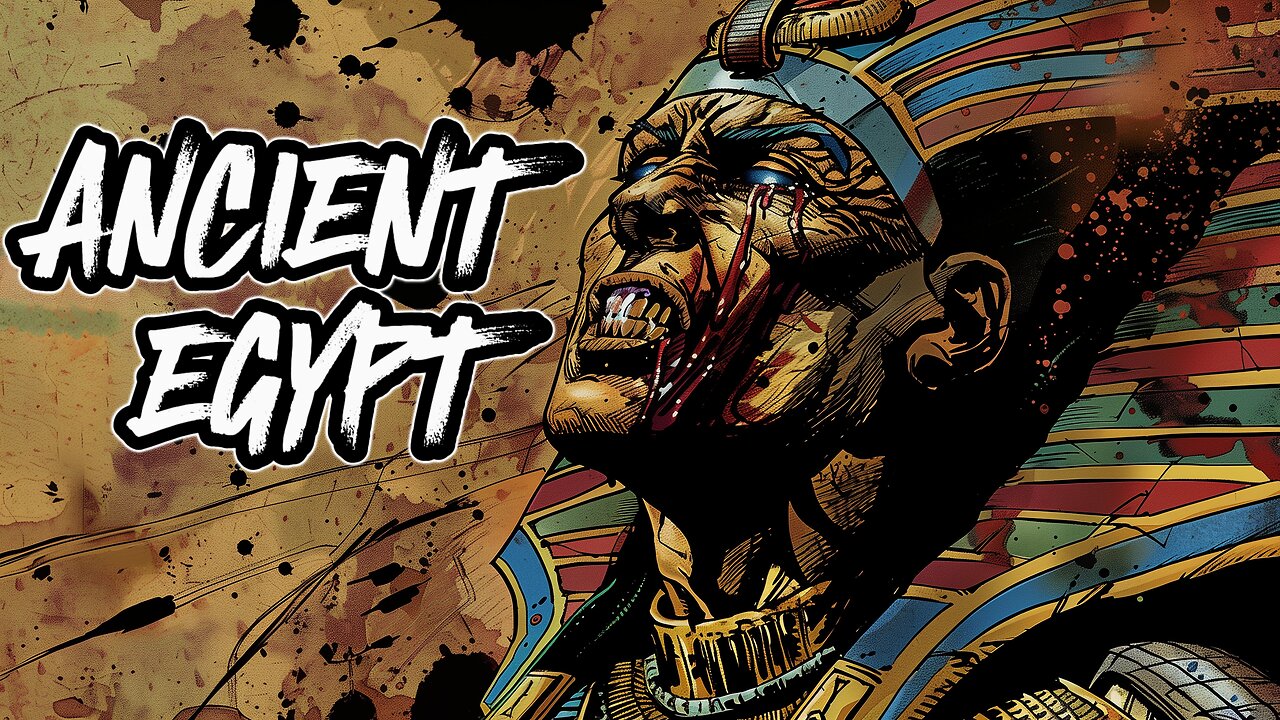Premium Only Content

Ancient Egpyt: Born to be Conquered
youtube.com/@History_of_Violence
This is a channel about the World History of Conquest.
Most of the content has been created by AI (Artificial Intelligence).
Images: Midjourney
Style: Frank Miller Comic Book Art
Voiceover: TikTok
Editing: CapCut
Music:
(No Copyright Music) Arabic Violin [Oriental Egyptian Music] by MokkaMusic / Timeless
Mokka - No Copyright Music
https://www.youtube.com/watch?v=vjztQybUy7E&list=PL7leQ1AtXXifY2iLxpXFSU-ZaIYgWRCaH
This Video is about Ancient Egypt
Around 3100 BC, King Narmer's unification of Upper and Lower Egypt kicks off the Early Dynastic Period. This era witnesses the consolidation of power and the beginnings of Egyptian civilization. Though warfare isn't as widespread as in later periods, local conflicts erupt as rulers seek to establish control over neighboring territories and resources.
Between roughly 2686 and 2181 BC, the Old Kingdom flourishes, marked by the construction of iconic pyramids and centralized government. But it's also a time of significant military action. Pharaohs wage wars to safeguard borders, quell rebellions, and secure vital resources. Notable campaigns occur against Nubians to the south and Libyans to the west. The Fourth Dynasty stands out, with Pharaohs like Sneferu and Khufu leading expeditions into the Sinai Peninsula.
From around 2181 to 2055 BC, Egypt experiences the First Intermediate Period, characterized by political fragmentation. This decentralization sparks numerous conflicts among regional rulers, each vying for control. External threats, including invasions from Nubia and Asiatics, add to the turmoil.
The Middle Kingdom, spanning roughly 2055 to 1650 BC, sees Egypt reunified under the Eleventh Dynasty. Military campaigns become tools for expansion into Nubia and the Levant, aiding trade routes and buffering against potential threats. Mentuhotep the second's reunification marks the period's beginning, laying the groundwork for Egypt's resurgence.
Around 1650 to 1550 BC, the Second Intermediate Period unfolds with the invasion of the Hyksos, who establish dominance in the Nile Delta. These Semitic newcomers bring new military technologies, including horses and chariots, influencing Egyptian warfare and challenging traditional power structures.
The New Kingdom, spanning approximately 1550 to 1070 BC, heralds a golden age of Egyptian expansion and conquest. Pharaohs like Ahmose the first and Thutmose the third wage successful campaigns against the Hyksos and expand Egypt's influence into Nubia, Canaan, and the Levant. Ramses the second's battles against the Hittites at Kadesh epitomize the era's military prowess, leading to an Egyptian empire stretching from the Euphrates to the Nile's Fourth Cataract.
Between about 1070 and 664 BC, the Third Intermediate Period sees Egypt's central authority weaken, paving the way for regional power struggles. Libyan and Nubian rulers assert themselves as pharaohs, fracturing Egypt's political landscape and leaving it vulnerable to foreign incursions.
Lastly, from roughly 664 to 332 BC, the Late Period witnesses foreign invasions and Persian domination. Assyrians and Persians seize control, leading to ongoing resistance from Egyptians striving to maintain their cultural identity. Alexander the Great's conquest in 332 BC brings an end to this period, ushering in a new era of Hellenistic rule.
-
 10:17
10:17
Dermatologist Dr. Dustin Portela
1 day ago $12.40 earnedOlay Cleansing Melts: Dermatologist's Honest Review
85.8K5 -
 1:02:20
1:02:20
Trumpet Daily
2 days ago $31.29 earnedObama’s Fake World Comes Crashing Down - Trumpet Daily | Dec. 20, 2024
54.5K40 -
 6:29
6:29
BIG NEM
1 day agoCultivating God Mode: Ancient Taoist NoFap Practices
42.9K9 -
 30:53
30:53
Uncommon Sense In Current Times
2 days ago $9.36 earned"Pardon or Peril? How Biden’s Clemency Actions Could Backfire"
61.6K4 -
 40:01
40:01
CarlCrusher
22 hours agoSkinwalker Encounters in the Haunted Canyons of Magic Mesa - ep 4
57.6K3 -
 59:44
59:44
PMG
1 day ago $7.55 earned"BETRAYAL - Johnson's New Spending Bill EXPANDS COVID Plandemic Powers"
62.5K25 -
 6:48:50
6:48:50
Akademiks
20 hours agoKendrick Lamar and SZA disses Drake and BIG AK? HOLD UP! Diddy, Durk, JayZ update. Travis Hunter RUN
184K33 -
 11:45:14
11:45:14
Right Side Broadcasting Network
9 days agoLIVE REPLAY: TPUSA's America Fest Conference: Day Three - 12/21/24
367K28 -
 12:19
12:19
Tundra Tactical
20 hours ago $13.36 earnedDaniel Penny Beats Charges in NYC Subway Killing
78.8K16 -
 29:53
29:53
MYLUNCHBREAK CHANNEL PAGE
1 day agoUnder The Necropolis - Pt 1
166K72